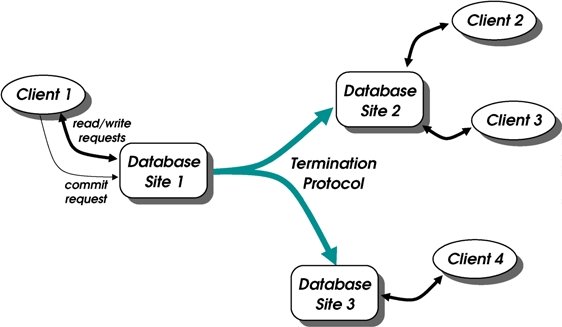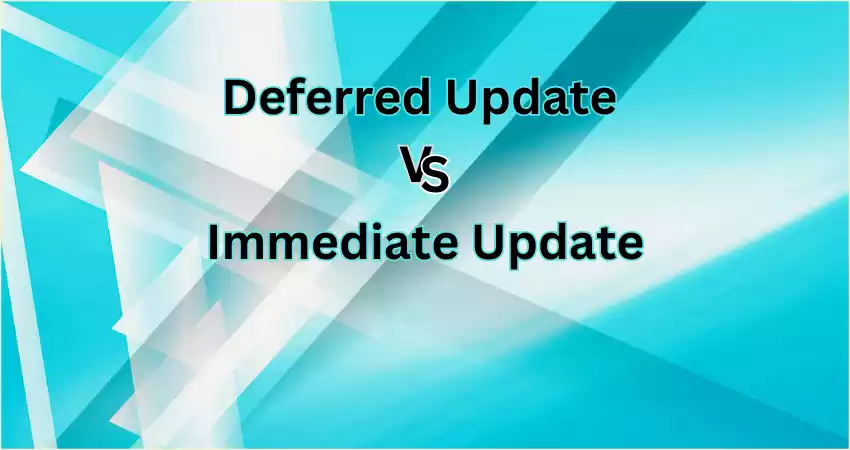In the realm of managing databases, Two fundamental strategies are notable: Deferred Update and immediate updates. These methods determine the way that changes to databases are handled and affect the consistency of data, performance as well and system complexity. In this article, we’ll look at the main distinctions between Deferred Update and Immediate Update and help you determine the best option for your requirements.
What is a Deferred Update?
A Deferred update is a type of database management method where changes to the database aren’t immediately reflected in stored data. Instead, the updates are gathered and applied to batch processing later in date.

This method is typically utilized in systems where efficiency and optimization of resources are crucial because it cuts down on the cost of frequent database updates. However, one disadvantage is that data could be temporarily inconsistent up until batch updates have been completed.
What Are Immediate Updates?
Immediate Update is a database management approach where any changes made to the database are instantly reflected in the stored data. This means that as soon as a modification or transaction is completed, it immediately affects the database, ensuring that the data is always up-to-date in real time.

Immediate Update is typically used in systems where data accuracy and timeliness are crucial, such as online transaction processing (OLTP) systems or applications requiring real-time analytics. It can lead to higher resource utilization and potential bottlenecks in situations with a high volume of concurrent updates.
Comparison chart of Deferred Update and Immediate Update
Here’s a comparison chart of the key differences between Deferred Updates and Immediate Updates:
| Aspect | Deferred Update | Immediate Update |
|---|---|---|
| Update Processing | Batch processing of updates | Real-time or near-real-time |
| Data Consistency | Temporary inconsistency until batch updates are applied | Immediate data consistency |
| Performance | Improved performance due to reduced update overhead | Potential for performance bottlenecks with frequent updates |
| Error Handling & Recovery | Complex error handling and recovery for batch updates | Simplified error handling as updates are applied immediately |
| Resource Utilization | Reduced contention for resources during update processing | Higher contention for resources due to immediate updates |
| Use Cases | Batch processing systems, data warehouses | Online transaction processing (OLTP) systems, real-time analytics |
| Data Integrity | Requires careful handling to ensure data integrity during deferred updates | Easier to maintain data integrity in real-time |
| Scalability | Scalable for systems with infrequent updates | Scalable for systems with frequent, concurrent updates |
| Suitable for | Systems prioritizing performance optimization | Systems requiring real-time data accuracy |
| Examples | Data warehousing, report generation | E-commerce transactions, financial systems |
Challenges and Considerations
The challenges and considerations in deciding on the right option between Deferred updates and immediate updates options include determining the best balance between the accuracy of data and performance. When it comes to Deferred Update, managing temporary errors in data and complicated errors when updating batch files can be difficult.
In contrast, Immediate Update may face issues with resource contention and could cause bottlenecks when systems are subject to frequent updates. Hybrid methods that combine the two strategies, or utilizing methods for data replication and synchronization could be required to tackle these issues, but it is important to ensure that the method chosen aligns with the needs for the system that runs databases and the applications it runs.
Conclusion
Anyone working with databases must understand the differences between deferred update and immediate update approaches, particularly for performance enhancement and data integrity reasons; deferred update can improve performance while immediate update provides immediate visibility of changes for other users of the database; which strategy best fits with specific use cases should ultimately determine your decision between deferred update or immediate update approaches.

